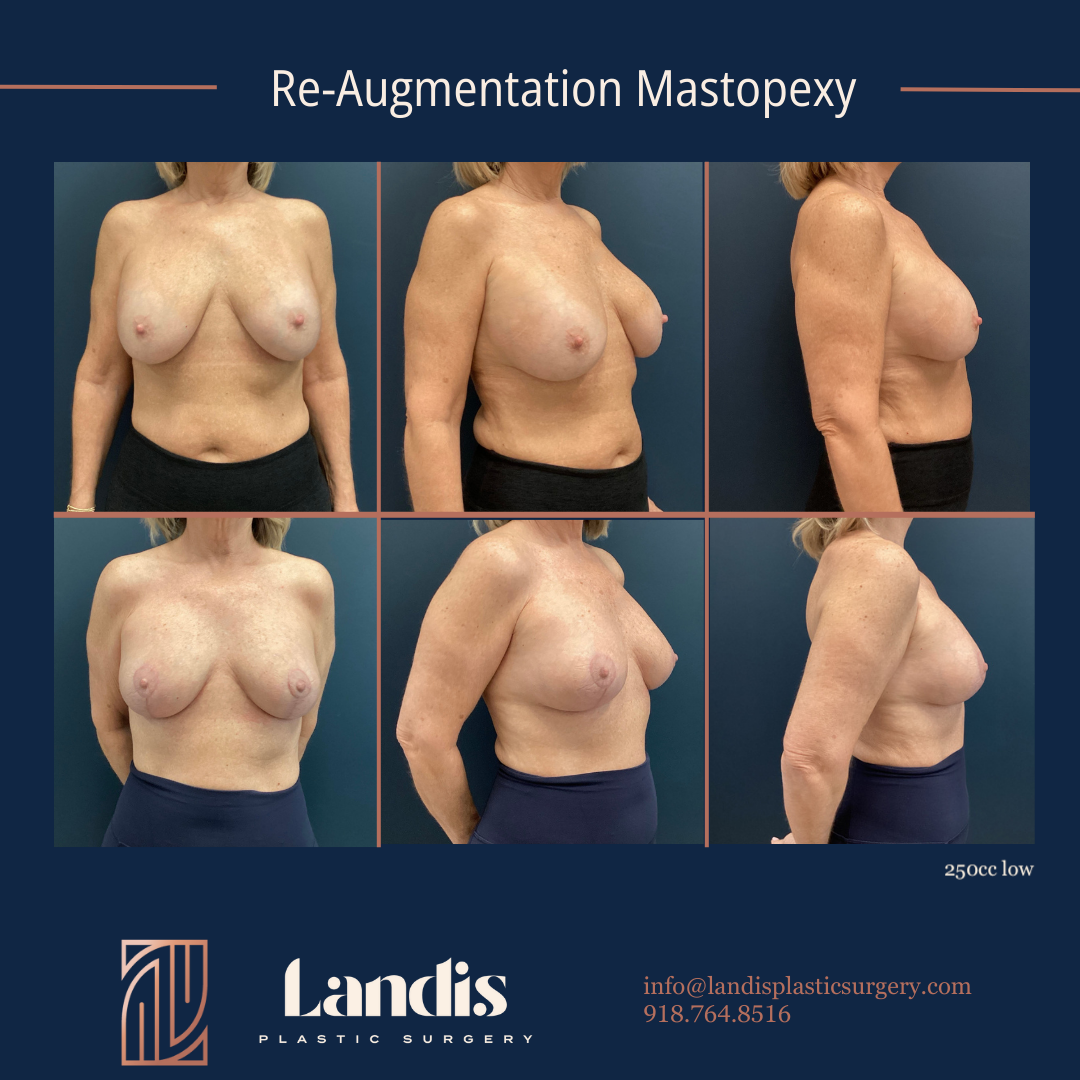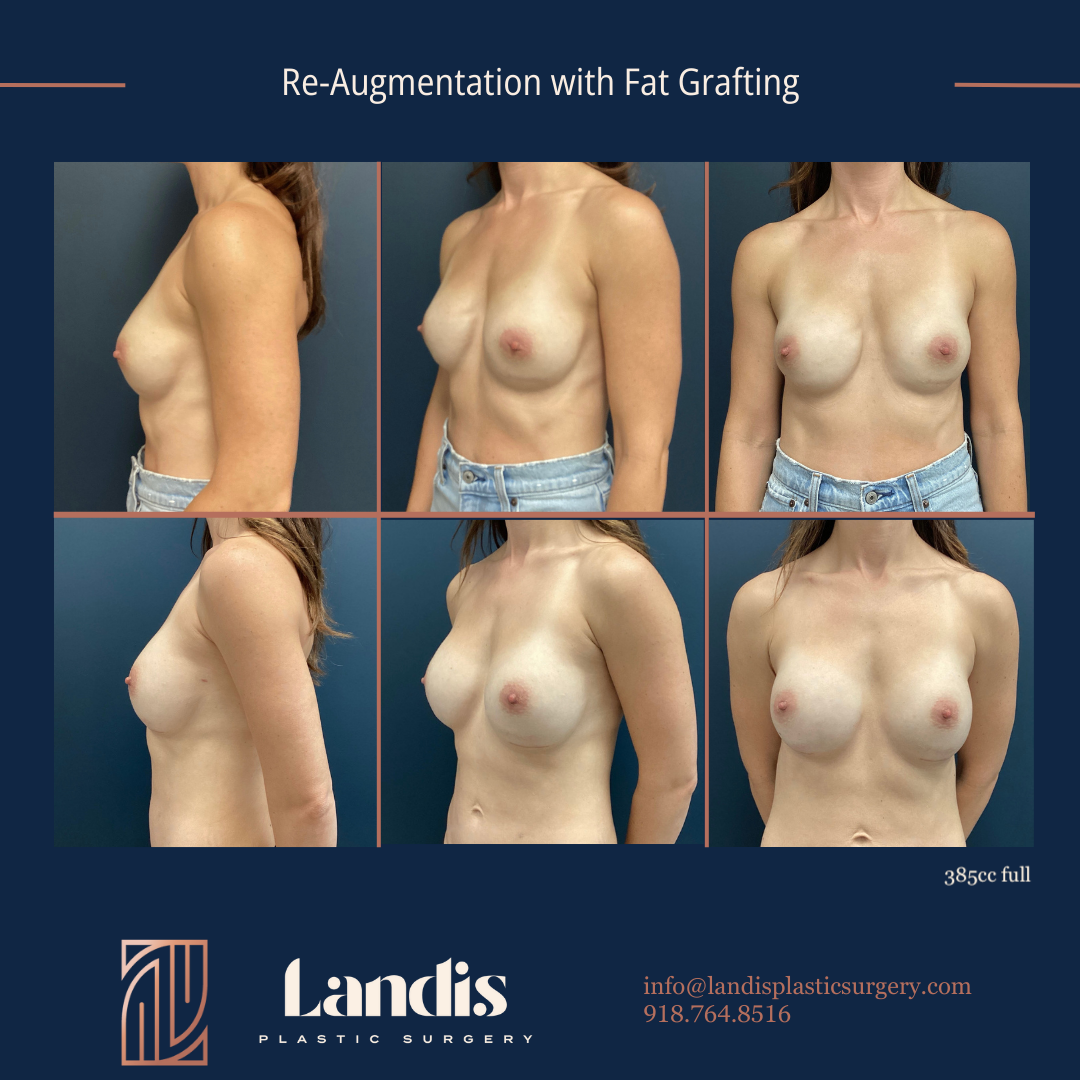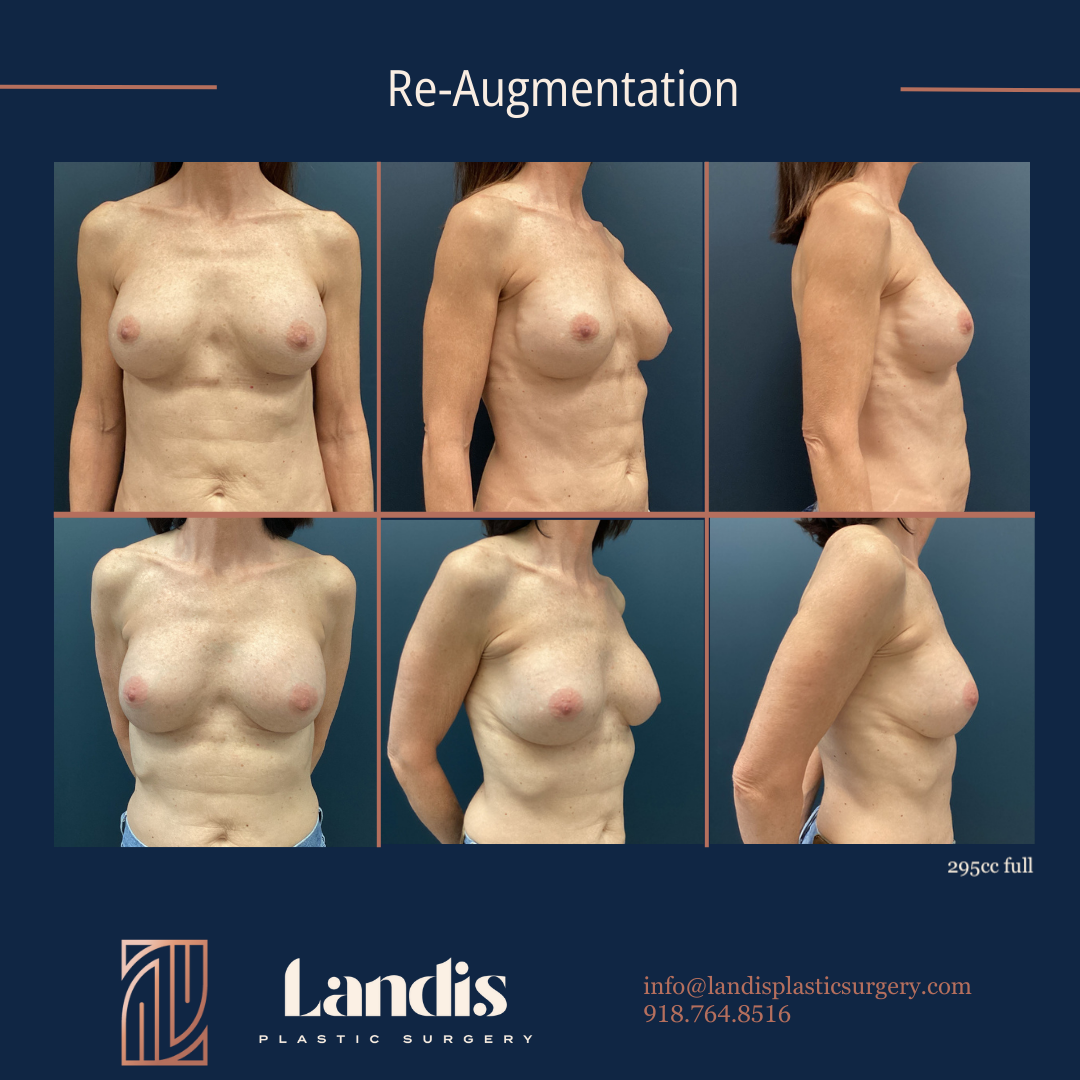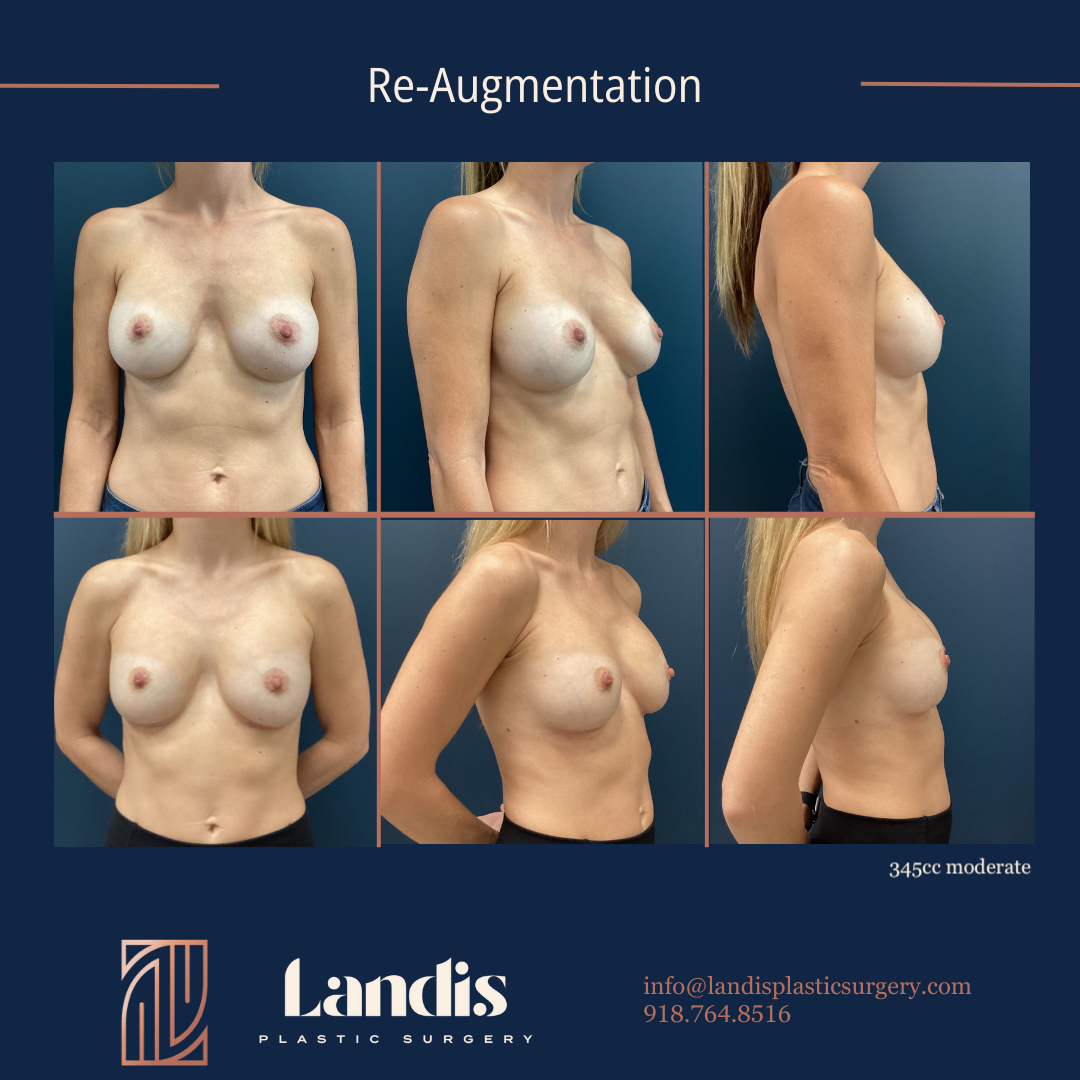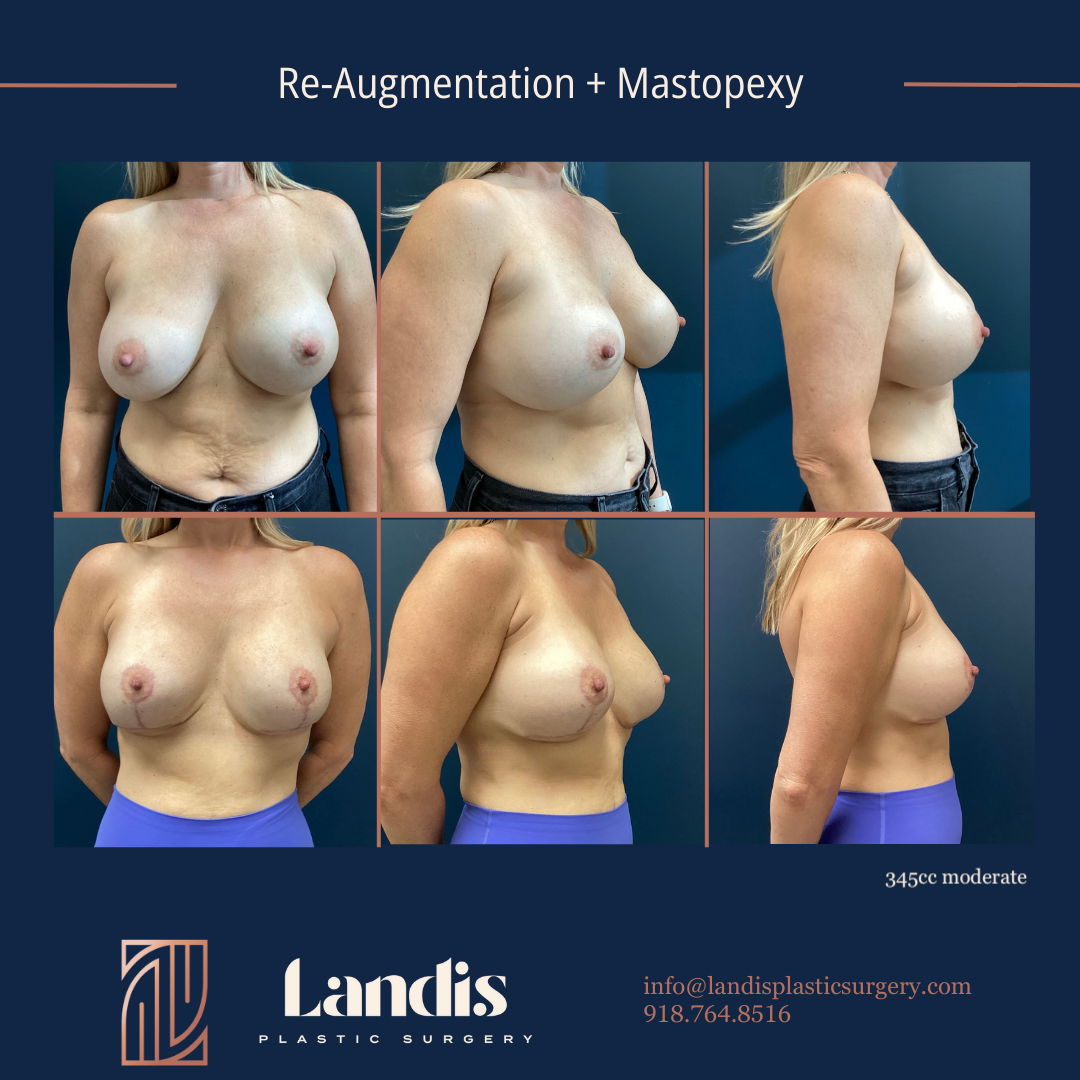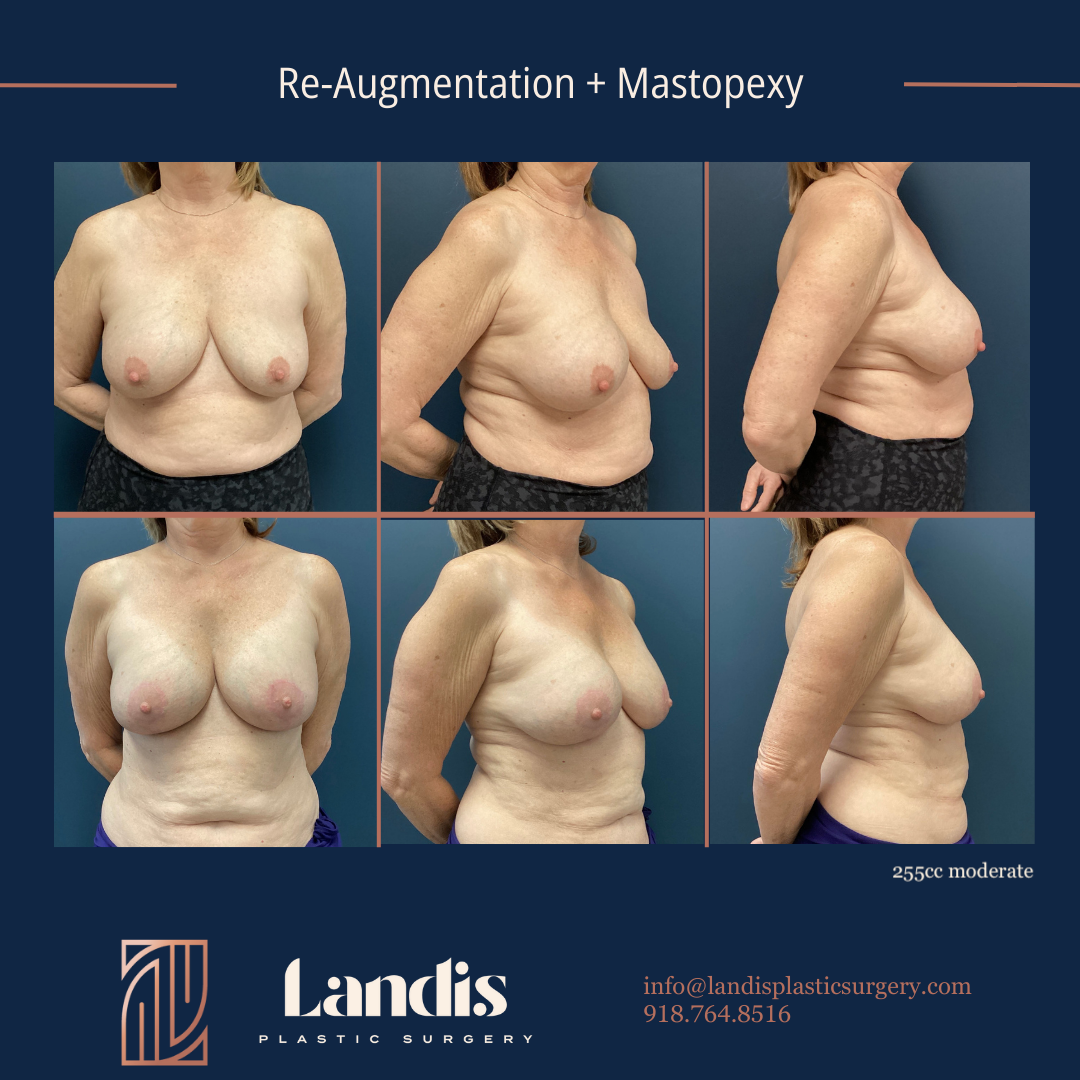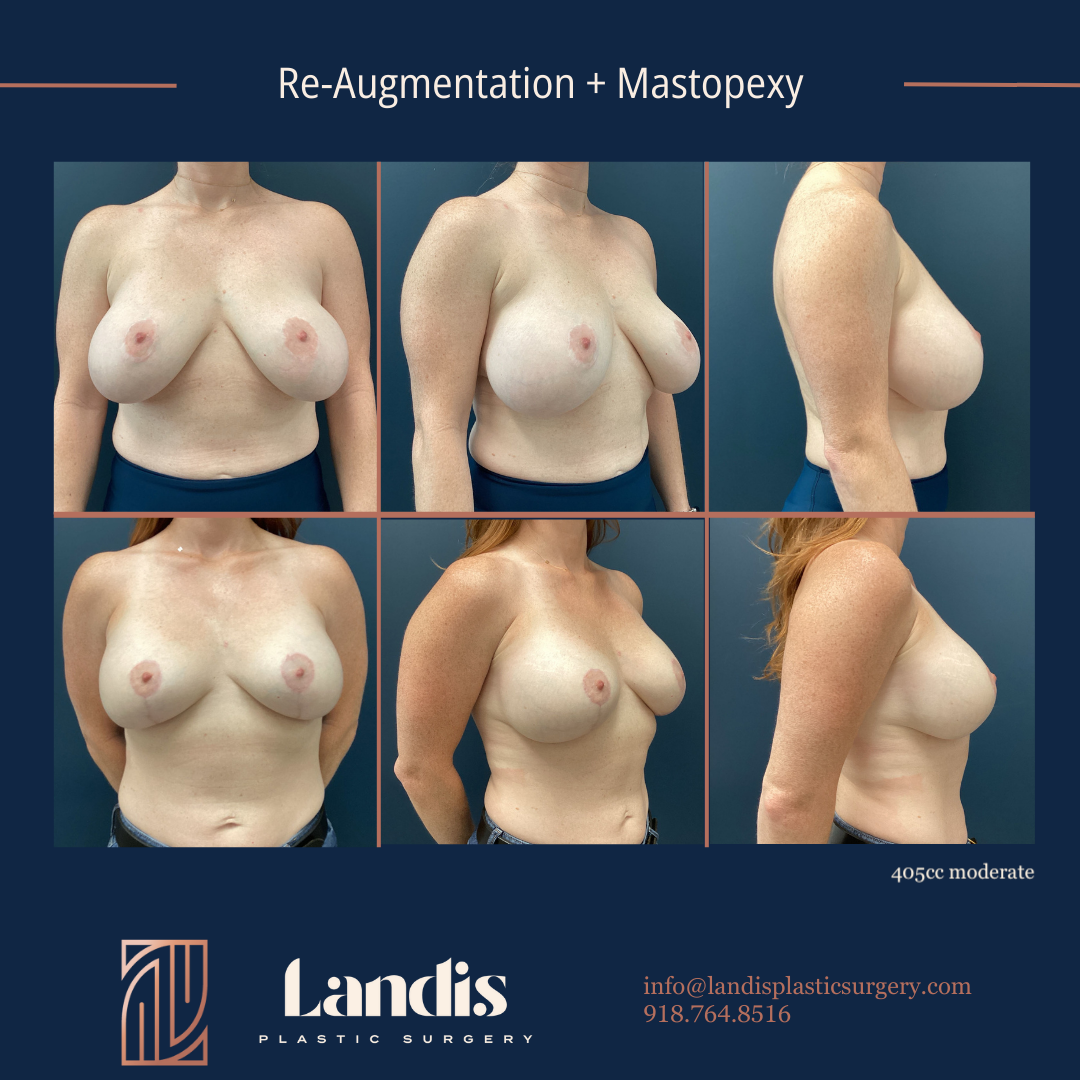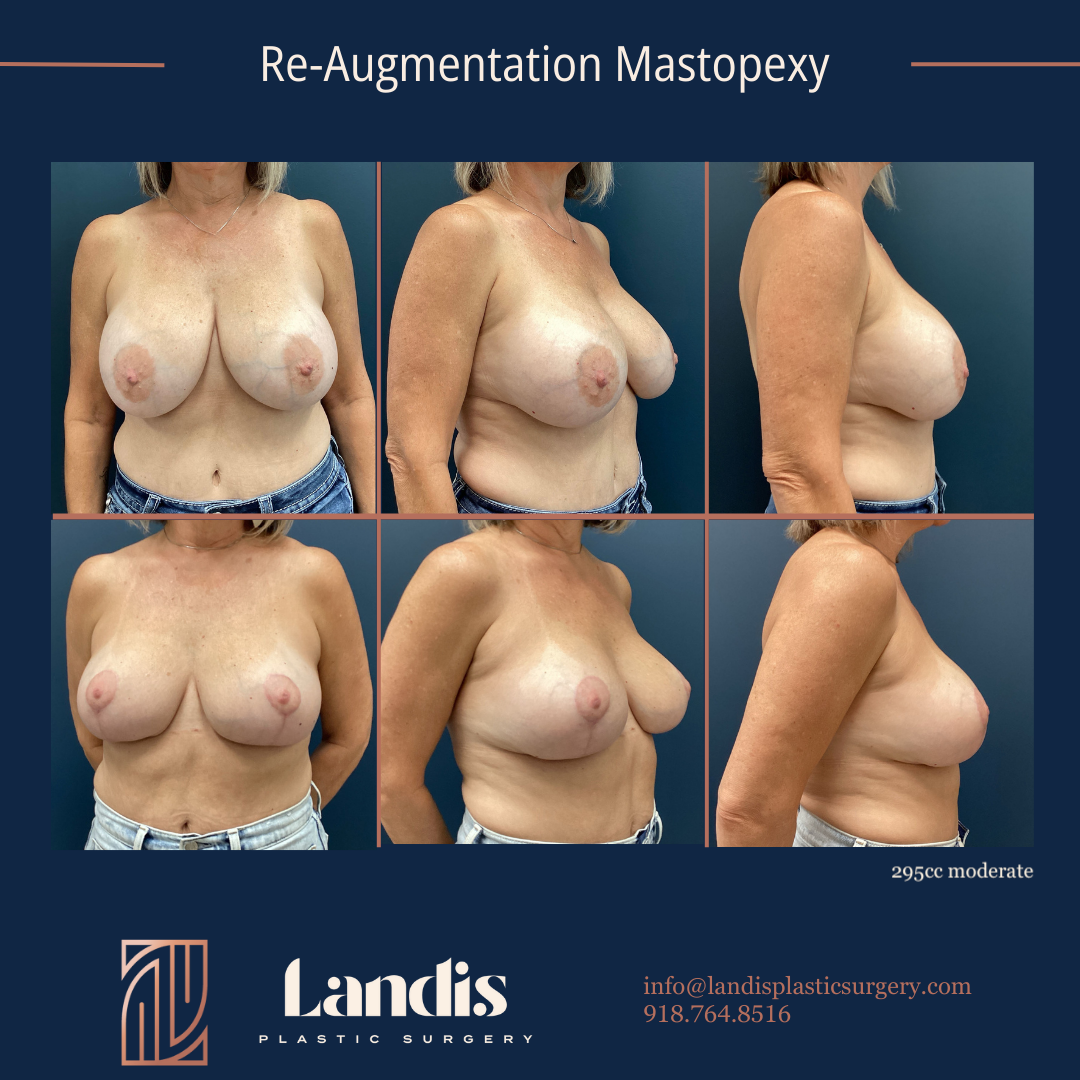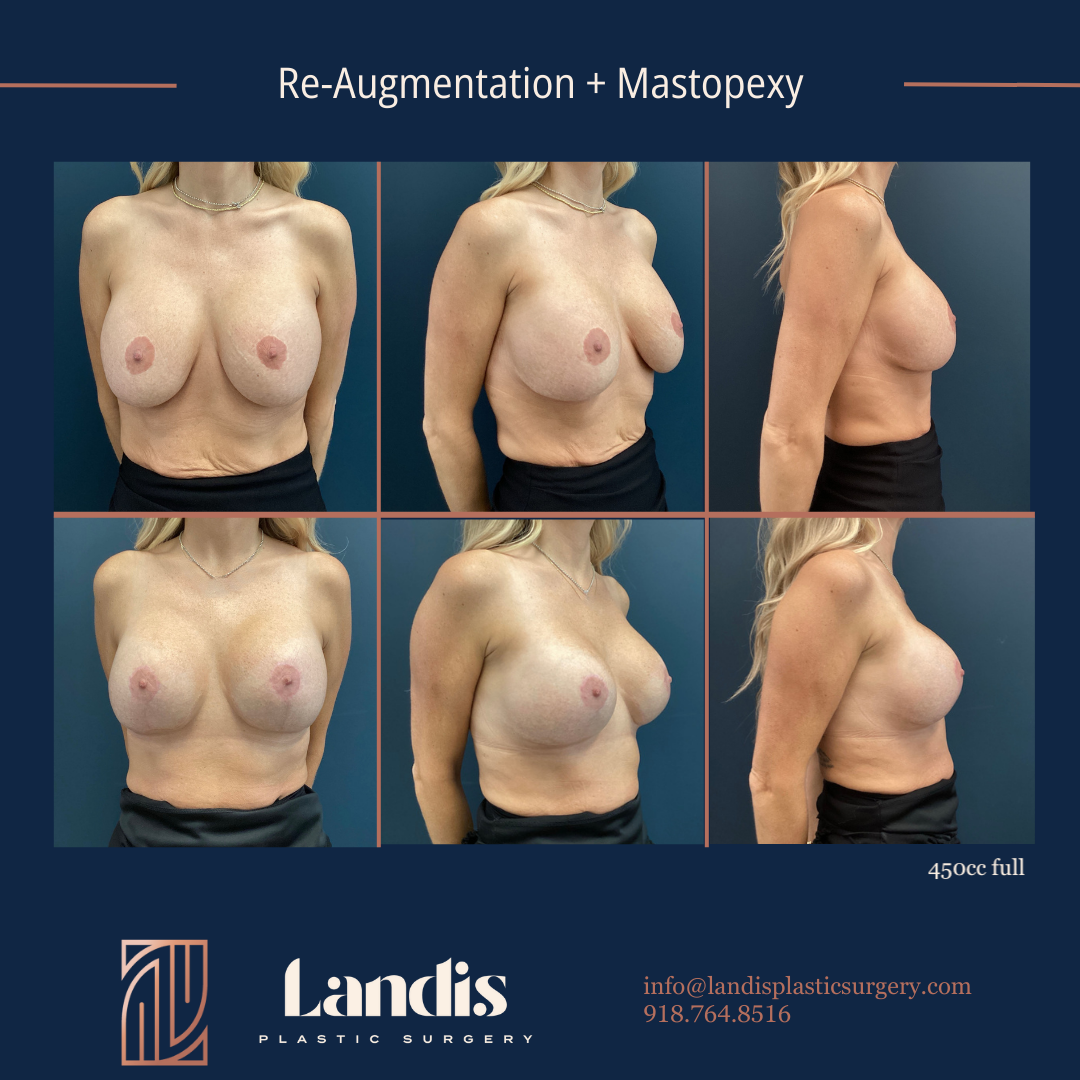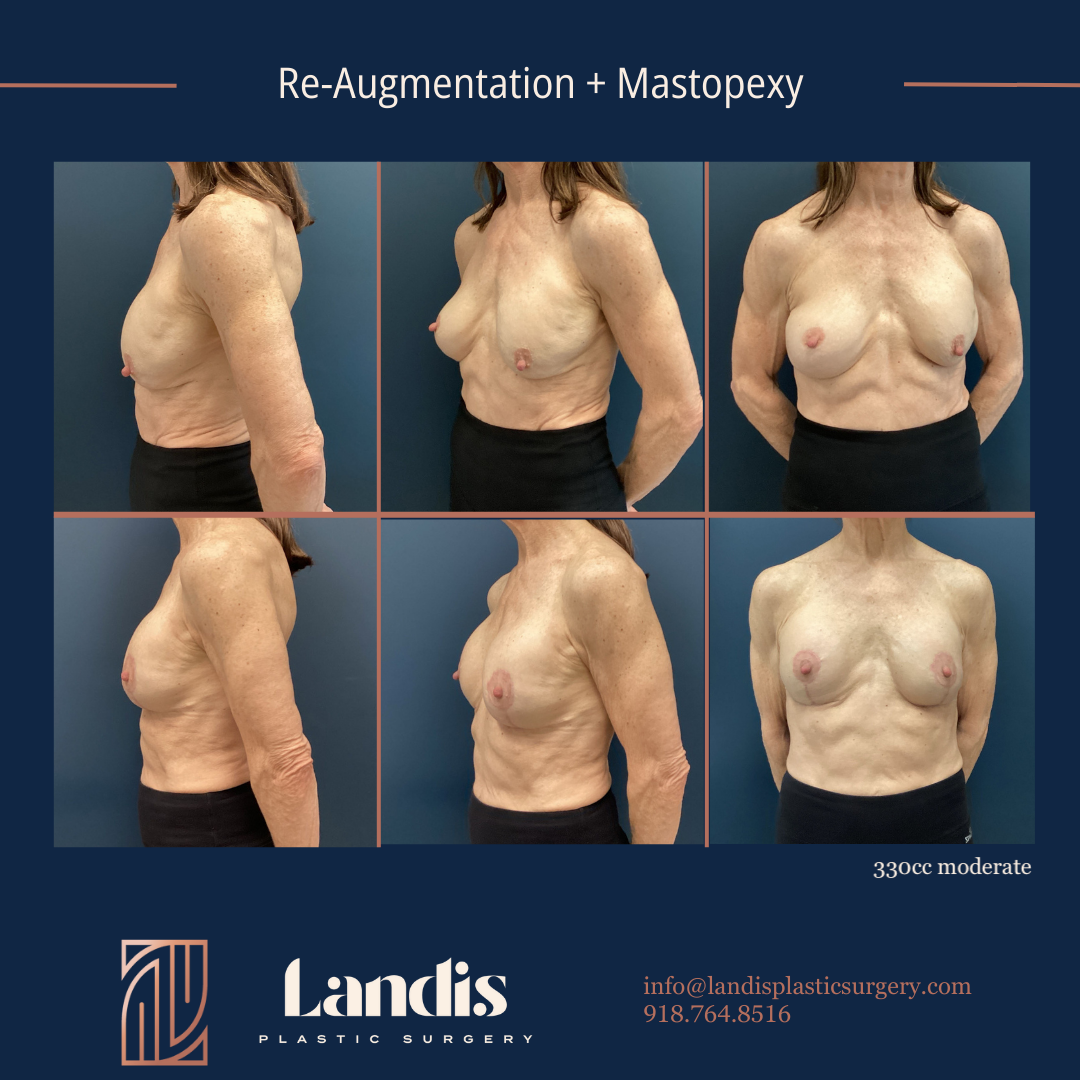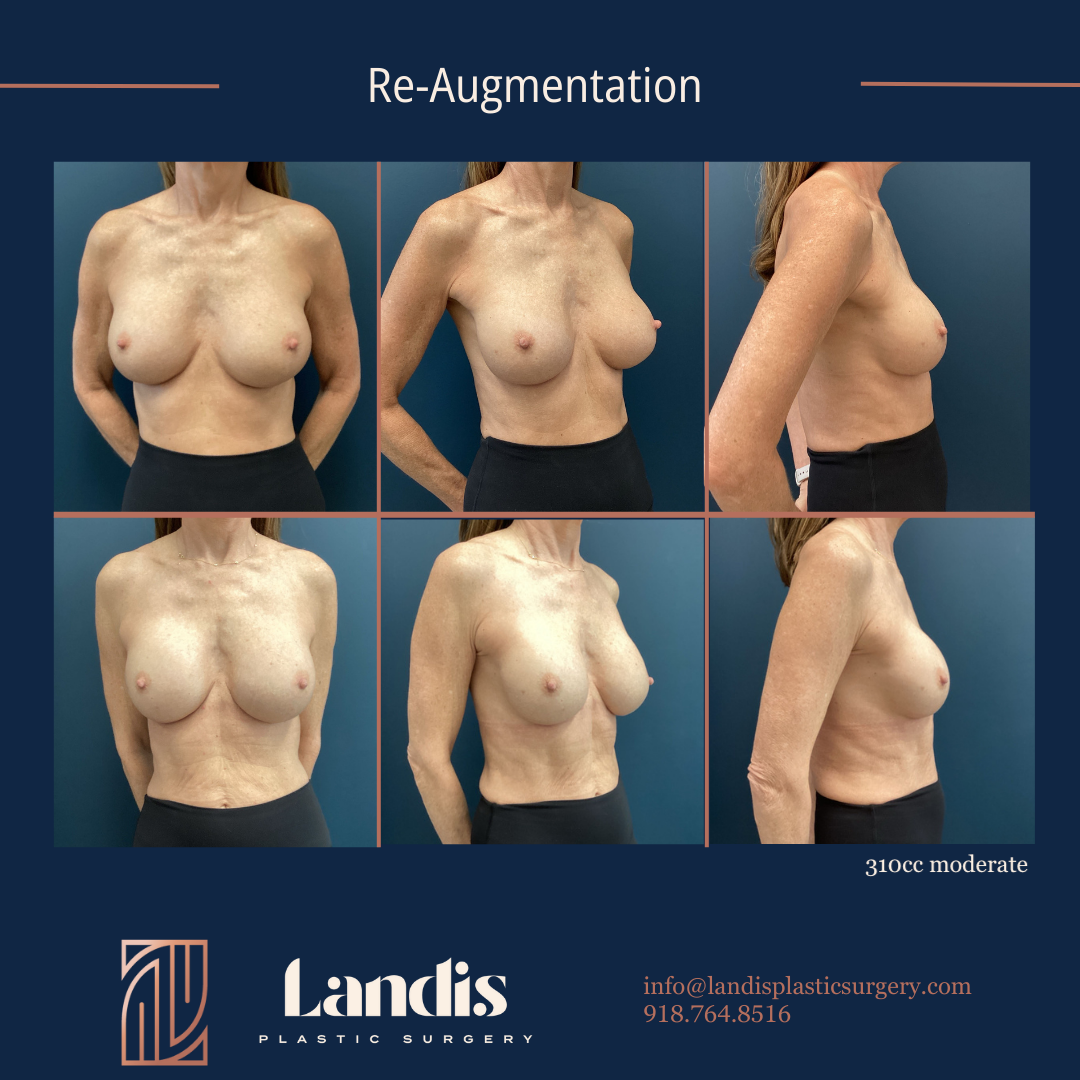Other Procedures
Other Procedures
Upper Blepharoplasty
Otoplasty
Lower Blepharoplasty
Lip Lift
Face Lift
SkinPen
Neck Lift
Injectables
Breast Augmentation
Breast Re-Augmentation
Breast Lift
Breast Augmentation + Lift
Breast Reduction
Breast Implant Removal
Breast Implant Removal + Lift
Breast Reconstruction Revision
Revision Breast Surgery
Breast Fat Grafting
Nipple Procedures
Gynecomastia Surgery
Mommy Makeover
Liposuction
Thigh Lift
Arm Lift
Abdominoplasty
Fleur-de-lis Abdominoplasty
Labiaplasty
Body Contouring
Scar Revision
Skin Lesion Removal
Breast re-augmentation is a surgical procedure that aims to revise or replace existing breast implants to enhance the size, shape, or overall appearance of the breasts.
Reasons for Breast Re-augmentation:
- Capsular contracture: This occurs when scar tissue forms around the breast implant, causing discomfort, distortion, or pain.
- Implant rupture or leakage: Over time, breast implants can rupture or leak, necessitating replacement.
- Change in aesthetic preferences: Personal preferences may change, and individuals may desire a different size, shape, or type of breast implant.
- Aging or changes in breast tissue: Natural aging or life events like pregnancy and breastfeeding can lead to changes in breast appearance, prompting a revision of the existing implants.
- Unsatisfactory initial results: Some individuals may not be satisfied with the outcome of their previous breast augmentation surgery and seek a revision to achieve their desired results.
Procedure Options:
During your consultation, Dr. Landis will assess your unique case and discuss the most suitable options for your breast re-augmentation. The procedure options may include:
- Implant exchange: This involves removing the current implants and replacing them with new ones. Dr. Landis will discuss the size, shape, and type of implants that will best meet your goals.
- Capsulectomy: If you are experiencing capsular contracture, a capsulectomy may be performed. This procedure involves removing the scar tissue capsule around the implant to alleviate discomfort and improve breast shape.
- Breast lift (mastopexy): In combination with implant revision, a breast lift may be recommended to address sagging or drooping breasts and achieve a more youthful contour.
- Fat grafting: The addition of fat to tissues around the breast implant can help to camouflage asymmetry, contour irregularities, or breast implant rippling.
Types of Breast Implants:
There are two types of breast implants used in breast augmentation surgery- silicone and saline.
- Silicone implants: These implants consist of a silicone outer shell filled with a semi-solid silicone gel. Silicone implants offer a more natural look and feel compared to saline implants. In the event of implant rupture, the gel may stay within the implant shell or migrate into the surrounding breast tissue. The newest generation of silicone breast implants are made of a cohesive semi-solid silicone gel, which some people refer to as “gummy bear implants”. Dr. Landis uses Motiva silicone breast implants. These implants come in a variety of sizes and projections. She will discuss what is right for you based on your desires and measurements.
- Saline implants: These implants are filled with sterile saline solution (saltwater) after they are inserted into the breast pocket. Saline implants provide a uniform shape, and in case of rupture or leakage, the saline is harmlessly absorbed by the body. These are less commonly used by Dr. Landis as they may not look or feel as natural in many patients.
Procedure:
Breast re-augmentation surgery is performed under general anesthesia and takes 1-2 hours depending on technique. Dr. Landis will make incisions and the implants can be placed either in the same pocket or a new pocket to achieve the desired results. Steps are taken during the placement of the implants to reduce the risk of infection and capsular contracture including meticulous dissection, irrigation with antiseptic and antibiotic solution, and implant placement with a Keller funnel. She will then close the incisions with dissolvable sutures, apply surgical tape dressings, and place a post-operative bra to support the breasts during the healing process. Drains are not typically used.
Recovery and Aftercare:
After breast re-augmentation surgery, patients may experience temporary soreness, swelling, and bruising. A supportive bra is provided on the day of surgery and is worn continuously for the first week to minimize swelling and provide support during the healing process. It is essential to follow Dr. Landis’s post-operative instructions regarding medication, wound care, and physical activity restrictions.
Breast augmentation patients are instructed to rest at home for one week, refraining from driving or lifting anything greater than 5 lbs. Patients may shower 2 days after surgery, but may not submerge in a bath tub or pool for 6 weeks. After one week a patient may return to normal daily activities and a desk job. Patients with a more physically demanding job may require more time off work. All patients are cleared at 3 weeks to slowly resume exercise activities.
It is important to note that breast implants do not have an expiration date but are not lifelong devices and may require replacement or removal in the future. Breast implant warranties are provided by the implant manufacturer. Currently the FDA recommends a screening ultrasound for silicone breast implants five years after the implants are placed and every three years thereafter. Women should also continue to have annual mammograms after the age of 40.
Dr. Landis will ask you about your current and desired bra cup size, but she can never promise a certain cup size after surgery. This is due to non-standardized bra sizing, which is similar to the variability in clothing sizes. We offer all patients the opportunity to try on breast implant sizers to gauge their goals. Patients are also encouraged to bring photo examples of their desired results. We will do our best to deliver the size you prefer.
Potential Risks and Complications:
As with any surgical procedure, breast augmentation surgery carries certain risks and potential complications. These may include:
- Infection
- Bleeding
- Capsular contracture (scar tissue formation around the implant)
- Implant rupture or leakage
- Changes in nipple or breast sensation
- Unfavorable scarring
- Anesthesia risks
- Asymmetry or unsatisfactory results
Dr. Landis will discuss these with you and address any concerns or questions you may have before deciding to undergo breast augmentation surgery.
Cost:
Breast re-augmentation cost includes the surgeon fee, facility fee, anesthesia fee, the cost of the implants, and any labs or imaging that may be required before or after surgery. The total cost for a breast re-augmentation with silicone implants ranges from $8,000-$12,000 and varies with type of implants used and if any additional surgery is required. Dr. Landis will formulate a plan specific for each patient and a detailed estimate will be provided. CareCredit is available to our patients, and we’d be happy to discuss this option with you!
Conclusion:
Breast re-augmentation surgery is a personal decision that should be carefully considered in consultation Dr. Landis. It is essential to have realistic expectations and understand the potential risks and benefits associated with the procedure. By thoroughly researching and discussing your goals and concerns, you can make an informed decision about breast augmentation surgery and achieve a wonderful result!
